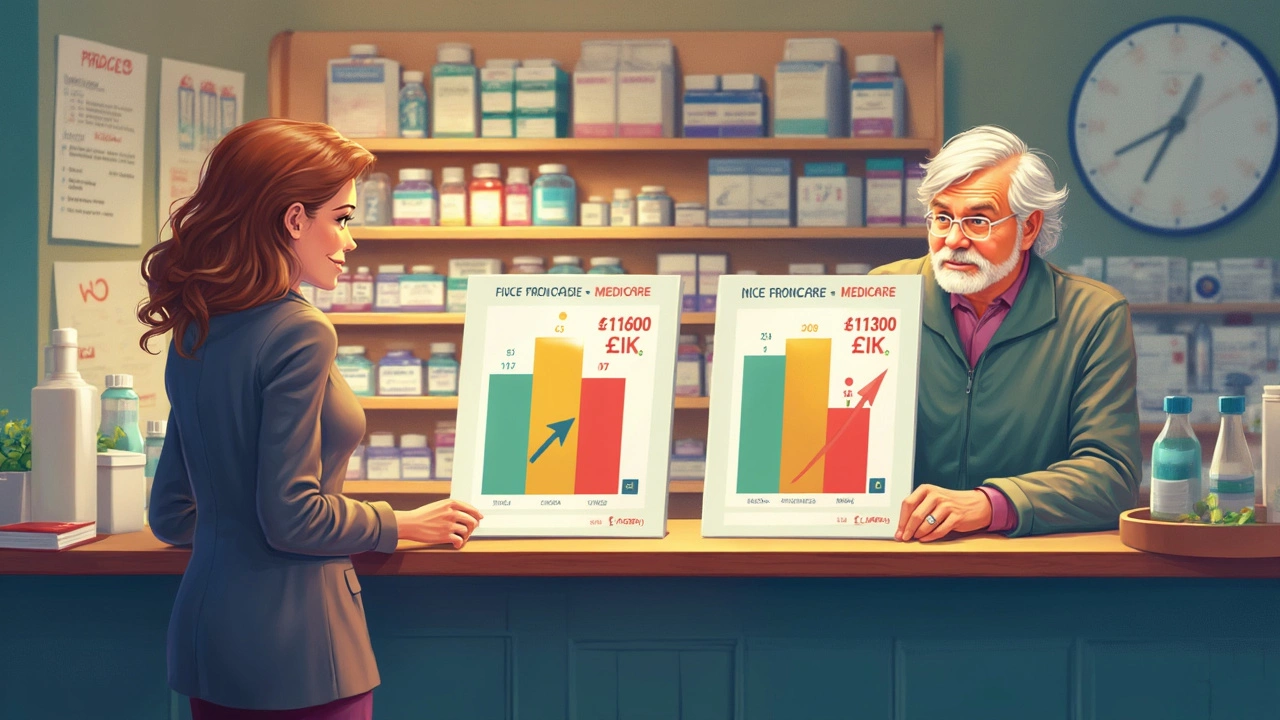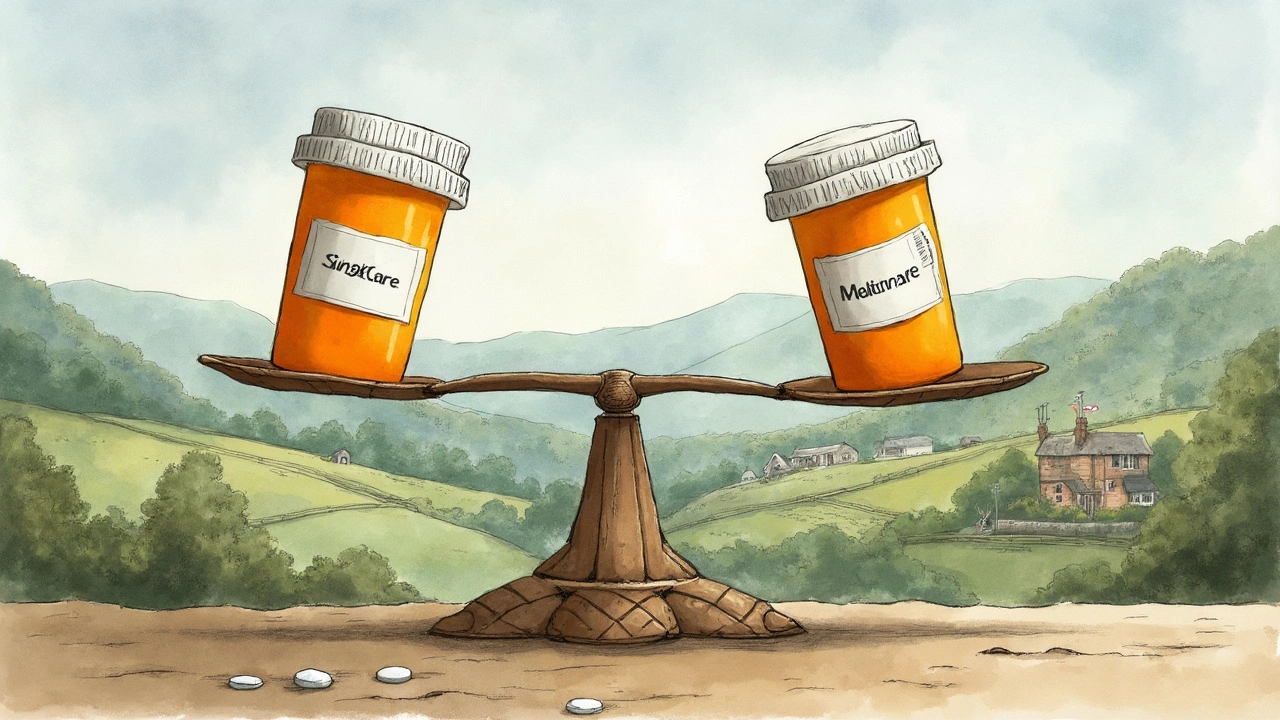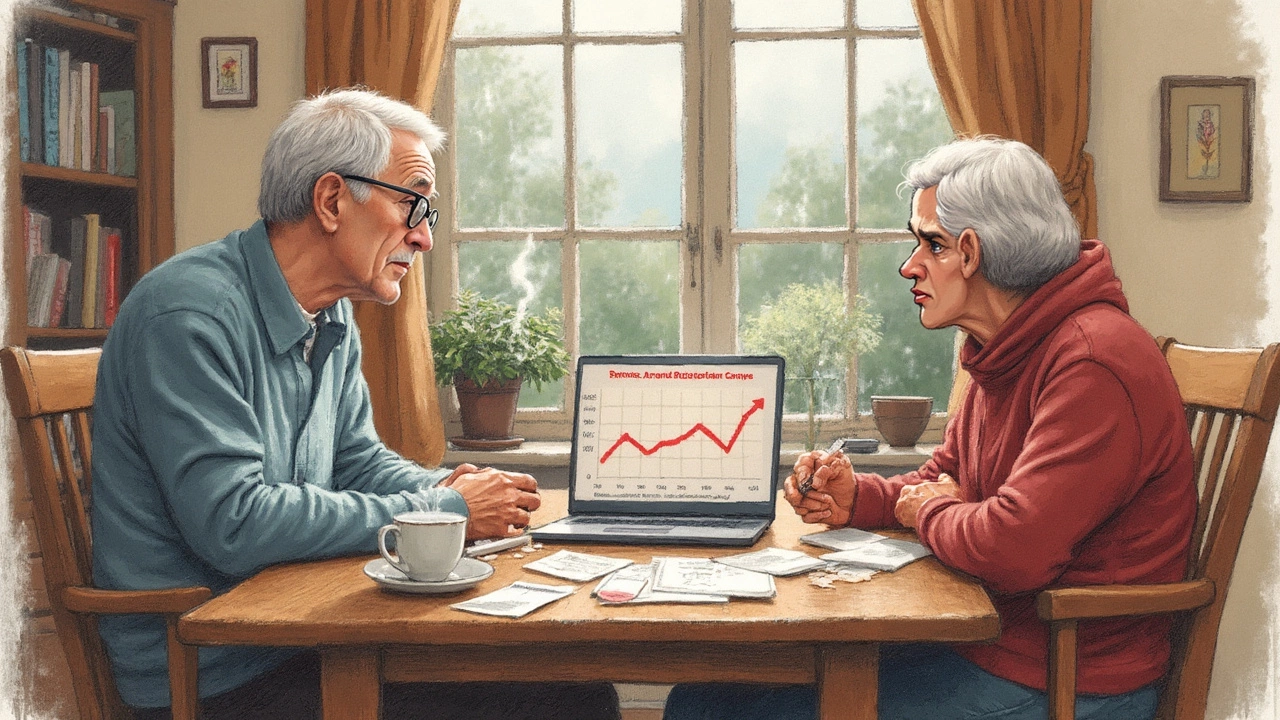
When it comes to managing your prescription costs, navigating between options like SingleCare and Medicare can feel like a full-time job. Having a solid grasp on which one actually saves you more money? That's where the magic happens. So, if you're scratching your head about which path to tread, you're definitely not alone.
SingleCare works differently from Medicare. It's like having a magic card for discounts at the pharmacy. You don't need insurance, and the cherry on top is exactly how transparent their pricing can be. You see the price before you even get to the pharmacy counter, which is super neat.
Medicare, on the other hand, is a whole different beast. Depending on your plan, it might not cover everything you need, or you might end up paying more than you expected. This can all depend on factors like your specific medications, where you live, and even the pharmacy you choose.
- Understanding SingleCare
- Medicare and Prescription Costs
- Comparing Costs: Real-Life Scenarios
- Factors Influencing Drug Prices
- Tips for Saving on Prescriptions
Understanding SingleCare
So, what exactly is SingleCare? Imagine a card that gives you quick, easy access to discounts on prescriptions without any insurance hassle. That's exactly what SingleCare aims to be. It's like having a VIP pass at all the major pharmacies, including CVS, Walmart, and Walgreens. No membership fees, no strings attached. You just show the card, and the magic happens.
SingleCare's strength is in its simplicity. With SingleCare, you'll often find prices are cheaper than paying with a typical insurance plan, especially if you fall into that dreaded donut hole or if you're prescribed a drug not covered by your plan. You can check prices directly on their website or app before even setting foot in a pharmacy. This transparency is one of its biggest perks.
They bring down costs by negotiating bulk prices with pharmacies and passing those savings onto you. They also make it a point to keep things straightforward. What you see on their platform is what you pay—no surprises at the register.
Here's a quick tip: Always compare the price you find with SingleCare against what your Medicare or insurance would charge. You'll find that sometimes, the out-of-pocket price through SingleCare is a lot less. That's particularly true for common prescription medications like generic blood pressure or cholesterol drugs.
| Pharmacy | SingleCare Price | Retail Price |
|---|---|---|
| CVS | $5.99 | $12.50 |
| Walmart | $6.49 | $13.20 |
| Walgreens | $5.89 | $11.95 |
Next time you need a prescription refill, try checking SingleCare’s price. You might just surprise yourself with how much you can save. Keeping these points in mind makes using SingleCare a no-brainer for cutting prescription costs.
Medicare and Prescription Costs
If you're on Medicare, you probably know that it’s not one-size-fits-all, especially when it comes to keeping up with your prescription costs. Medicare is split into parts, with Medicare Part D focusing specifically on prescriptions. But here's a kicker—it doesn’t always cover every drug out there, and the out-of-pocket costs can vary, big time.
So, let’s break it down a bit. With Medicare Part D, you usually need to choose a plan offered by private insurance companies. What's tricky is that each plan has its own list of covered drugs, known as a formulary, and these can change annually. Plus, medications are classified into tiers that determine your co-pay amount. Sounds simple enough, right? But, there’s often a big jump in price from one tier to the next.
Then there’s this thing called the “donut hole.” It's a gap in coverage where, after you and your plan have spent a certain amount on prescriptions, you might find yourself paying more out-of-pocket until you reach another threshold. It can be a real budget buster if you’re not prepared.
Here’s a neat fact: under Medicare Part D's standard benefit, in 2025, beneficiaries will pay no more than 25% of the cost of their prescriptions after reaching the initial coverage limit and until they hit the catastrophic coverage threshold. That’s a mouthful, but knowing where these financial cliffs are can save you some big bucks!
To make the most out of Medicare, comparing different Part D plans each year can be really beneficial. Don’t settle on one just because you’ve always used it. Drug prices differ, and so can savings. And always keep an eye out for plans that could cover all the meds you need without leaving you in the donut hole for too long.
Here’s a quick look at Medicare specifics:
| Aspect | Details |
|---|---|
| Initial Deductible | Costs vary by plan |
| Initial Coverage Limit | Set annually |
| Donut Hole | 25% cost sharing |
| Catastrophic Coverage Threshold | Minimal cost-sharing on prescriptions |
Juggling these factors might seem overwhelming, but with a bit of planning and comparing, you can get the most out of your Medicare when all those monthly bills come rolling in.

Comparing Costs: Real-Life Scenarios
Alright, let's see how this all shakes out in real life. Imagine you're picking up a common prescription, like Atorvastatin for high cholesterol. Now, if you use SingleCare, you might find it for as low as $10 without any insurance. That's like seeing a coupon before you buy!
Now flip the coin and access the same medication through Medicare. Depending on the plan, you might pay just a $5 copay with Part D, but keep in mind, the devil's in the details. You'll also be paying monthly premiums, and those can vary widely based on your specific plan.
For a more complex situation, consider someone on multiple medications, like insulin and blood pressure meds combined. With each additional prescription, comparing these two gets tricky. Medicare might generally offer better pricing for some of those expensive drugs, especially if they fall under your plan's formulary, but don't forget the dreaded coverage gap, aka the "donut hole." Post the initial coverage limit, costs can skyrocket until catastrophic coverage kicks in.
Here's another angle: imagine you live in Florida and hop over to New York City for a visit, needing a refill midway. Surprise! Prices on both SingleCare and Medicare can shift based on location and pharmacy choice. With SingleCare, those prices are upfront online, plain as day, but with Medicare, out-of-network pharmacies could hike costs big time.
Ultimately, which is actually cheaper can feel like flipping a coin, depending on what meds you need and where you get them. One way to test it is to plug your prescriptions into both systems and check their real prices. Apps and websites for SingleCare are easy access, and for Medicare, use the online Plan Finder to see a breakdown based on your current medications and location. Both tools help unravel this tangled web a bit, showing the power of a little homework before you make your move.
Factors Influencing Drug Prices
When you're staring down a rising hill of prescription costs, it's natural to wonder: Why the rollercoaster pricing? Let's break down some key factors influencing the cost of drugs, whether you're using SingleCare, Medicare, or any other service.
1. Location, Location, Location: Sounds like real estate, right? But where you live can hugely impact what you pay at the pharmacy. Prices can vary not just state by state but even from one pharmacy to another in the same city.
2. The Brand vs. Generic Game: Choosing between brand-name and generic drugs can blow your mind (& budget). Generic versions often come at a fraction of the price but, depending on your prescription, sticking to the brand might be your only choice, affecting your wallet.
3. Supply and Demand Dance: Just like avocados in a trendy cafe, the demand for certain medications can hike up prices. Scarcity can bump up costs, especially for niche or newer drugs. If demand spikes, sometimes prices do too.
4. Insurance Formulary: If you're using Medicare, what's covered under your plan’s list, or formulary, plays a giant role. Not all drugs are treated equally under insurance plans, which could leave you footing a larger portion of the bill.
5. Discounts and Coupons: Platforms like SingleCare often have different discounts that can dramatically slash prices. These discounts can change frequently, so staying updated can lead to big savings.
Understanding these factors can help you plan more effectively and maybe, just maybe, turn those prescription costs from a mountain into a molehill.

Tips for Saving on Prescriptions
Saving on prescriptions doesn't have to be a mystery. Whether you're using SingleCare, Medicare, or neither, there are concrete steps you can take to lighten the financial load from your prescriptions.
First off, always take a moment to shop around. Prices can vary a lot from one pharmacy to another. Just because your regular spot charges a certain amount doesn't mean you can't get it for less somewhere else. Apps and websites can be your best friends for comparing prices.
Another key tip is to ask your doctor about generics. These are essentially the same medications but usually at a fraction of the cost. Your doctor will know if there's a generic version available and if it's right for you.
Don't underestimate the power of talking to your pharmacist. They can provide insights into more affordable medication options or even suggest different forms of the same drug that might be cheaper. Pharmacists can be total lifesavers when it comes to budgeting for prescriptions.
- Use prescription discount cards like SingleCare to see if offers could save you more than your existing Medicare benefits.
- Check online for pharmacies that might have lower prices for mail-delivery prescriptions.
- Look into state or community pharmaceutical assistance programs if you're having trouble affording your medicines.
If you're on Medicare, make sure you're enrolled in the right Part D plan for you. Plans change yearly, and what worked last year might not be the best this year. A quick review could unveil cheaper options that fit your needs.
Being proactive and informed is key. Don't just accept the price—question it, research it, and find solutions that fit your budget better. Knowledge truly is power when it comes to saving money on medications.